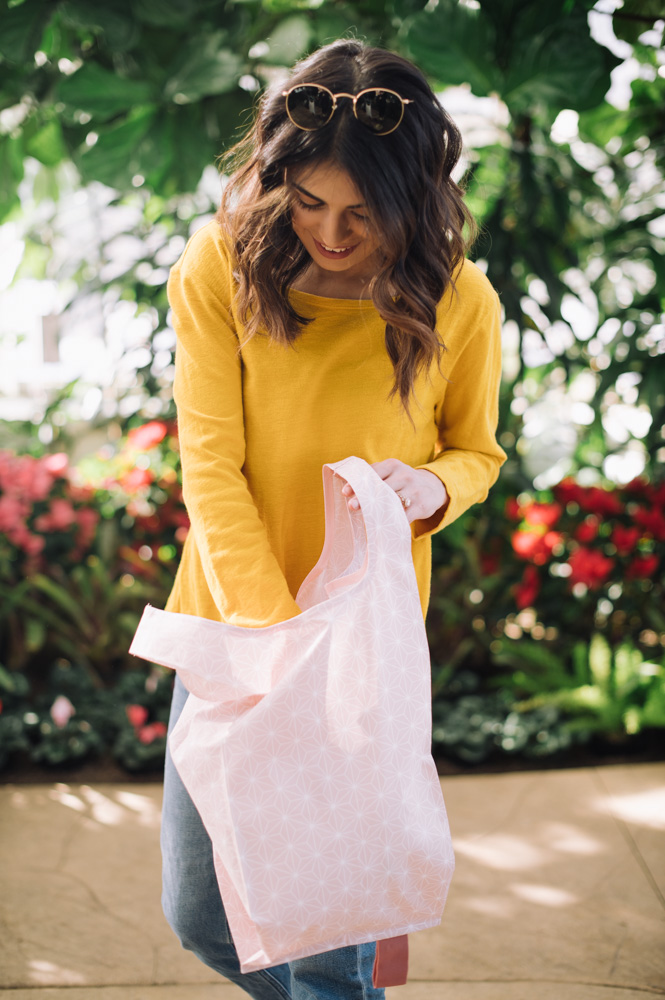
Reduce your usage of plastic bags the next time you hit the farmers market or grocery store by bringing your own custom fabric totes. This helpful tote bag is ideal for carrying produce, books, snacks, and so much more! Our favorite aspect of this fabric tote is that it rolls up with an elastic loop for easy storage, making it a great option for moms-on-the-go. Compared to bulkier store-bought options, this tote bag takes up hardly any room and can be easily customized. Carry your necessities without worrying about non-reusable plastics with this sustainable fabric option.
Materials:
- 2/3 yards thin woven fabric width, 45” (115 cm) wide
- 8” (20 cm) elastic band, 1 1/2” (38.1 mm) wide
- 2 yards (1.9m) single-fold bias tape, 3/8” (10mm) wide
- 1 spool color-matched thread
- Grid pattern paper
PATTERN INFO:
The pattern itself is based upon a simple flat grid, which fits into a square, of which the size depends on the desired depth of the style (in this example, 4″). The overall bag dimensions are approximately 18” high (length) by 10” wide (width) by 8” deep (depth). This will give a roomy market bag, which should carry a reasonable amount of items and weight.
When not in use, the tote bag can be rolled up and held with an elastic loop for storage.
Seam allowance (1/2″) or [12 mm] is included in this pattern-draft.
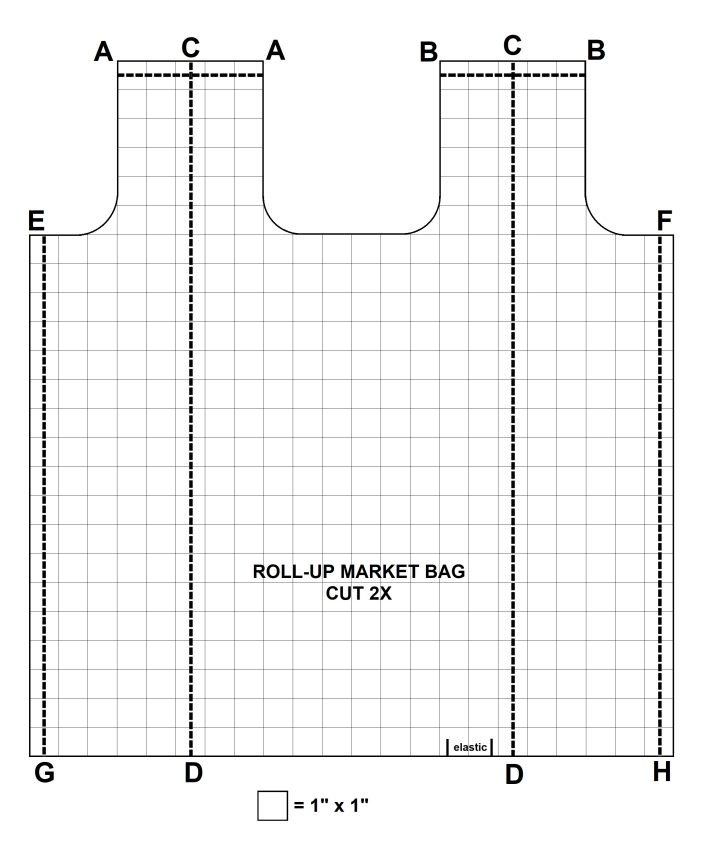
Scale: 1 square = 1”
SELECTING AN IDEAL FABRIC:
Any light-weight and tightly-woven fabric may be used for this sewing project. The cloth must be tightly woven so that the bag is sturdy and durable and will not stretch out-of-shape. When not in use, the bag is rolled-up, therefore a thin material (something light to medium in weight) is desirable so that it may be folded without being bulky. The primary construction method used in this project is a French seam for strength and a neat seam finish, so the fabric used should be thin to achieve good results when sewing.
Choose your favorite solid color or print. Be aware that no consideration has been made for matching prints yet most abstract, geometric, or mini-prints will appear unaltered after being cut. If your fabric choice has a directional printed motif, you may need to get additional yardage if the front and back sections of the bag cannot be cut side by side across the fabric’s width.
FRENCH SEAM CONSTRUCTION:
A French seam is an enclosed seam and is used to enclose the raw edges of fabric within the seam. French seams are constructed in two steps: the first run being wrong sides together, and the second run being right sides together. The double row of machine-stitching strengthens the construction of the seams on the market bag and the seam finish is neat on the interior as well as on the exterior. No need to line the bag and the stitching keeps everything flat (think thin), making it easy to fold and roll up.
How to Sew a French Seam:
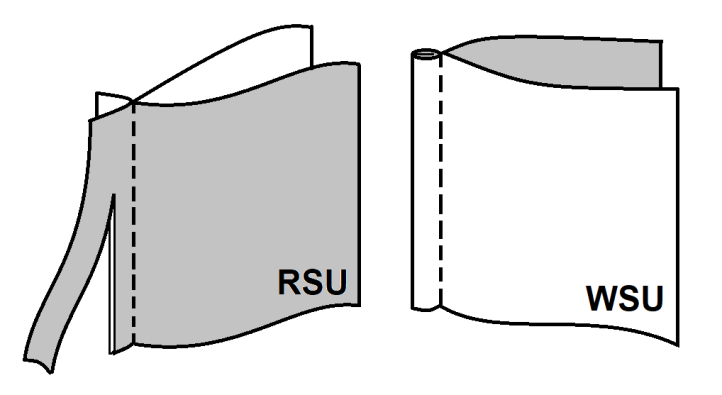
- Determine the seam allowance width vs. the finished French seam width.
- Place wrong sides of fabric together and pin/baste in place.
- Sew one row of stitches, the length of the piece of fabric, using half of the width of the seam allowance provided.
- Press flat to set the stitches, then press the seam open.
- Trim the seam allowance close to the stitching line.
- Turn the fabric pieces inwards so that right sides are facing each other.
- Press flat along the seam line.
- Sew the second line of stitches, using the remaining width of the seam allowance, enclosing the raw edges of the cloth.
- Press flat to finish the seam.
Sewing Instructions:
- Draw the pattern on 1” x 1” grid pattern paper. Mark all alpha-numeric points (A,B,C,…).
- Fold the fabric in half lengthwise and align the selvages. Lay out the pattern template parallel with the selvages and cut 2 pieces. Set aside.
- Make an elastic loop by cutting a strip of elastic band 6” long and folding it back on itself to produce a loop. Stagger the short ends of the band to create a beleved edge and stitch down to secure. Set aside.
- With face side up, pin/baste folded bias tape to edges of bag handles from A to B, A to E, and B to F on each bag-half. Sew in place.
- Under-stitch bias tape to cloth and grade seam allowance, then turn tape under to wrong side of material. Top-stitch down bias tape to enclose raw edges. Press flat.
- On each bag-half with fabric face down, fold sides of bag towards the center from C to D. Press foldline flat.
- Join the handle sections of the bag with right sides together so that taped edge of handles align and match up A to A and B to B. Sew a seam, 1/2” from raw edge across the top of each handle. Press seam open. Grade the seam allowance.
- To complete the bag handles, fold the fabric in half, with wrong sides together and match up A with A and B with B. Sew across the finished seam from the foldline to the tape edge (A to C and B to C) producing a mock French seam to enclose the joining seam.
- With wrong sides together, align and match up the side seams from E to G and F to H. Sew as a French seam by stitching half the seam allowance width (1/4”), pressing and turning with right sides together, and stitching remaining seam allowance (1/4”). Press French seam flat.
- Pin/baste the elastic loop up-side down on the bottom right of the bag, approximately 1” from the foldline at D.
- Lay each side flat between the two bag-halves from the foldlines C – D. Pin/baste the layers flat between D and D.
- With right sides together, machine-stitch from fold to fold (D to D) along bottom edge. Sew half-width of seam allowance. Ensure that the elastic is sandwiched between the layers. Press the seam flat and trim away the seam allowance by half.
- Turn bag right side out (wrong sides together) and have the elastic loop exposed from the seam. Press bottom edge and sew the remaining seam allowance, so that a “French seam” is formed. Press hem flat.
HOW TO ROLL UP YOUR TOTE:
Flatten market bag and fold in half length-wise, aligning the bag handles one on top of the other. Fold the center portion of the bag on top of the handle portion of the bag. At this stage, there should be several folded layers, one on top of another, forming a narrow strip of cloth. Fold the handles facing downward. From the last fold, fold the strip in half equally and start rolling the market bag jelly roll-style to the elastic loop. Loop elastic around cloth to make a compact bundle to slip into a purse or coat pocket.
View this post on Instagram
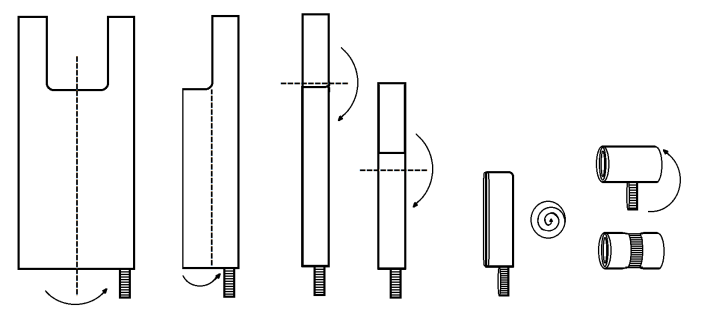

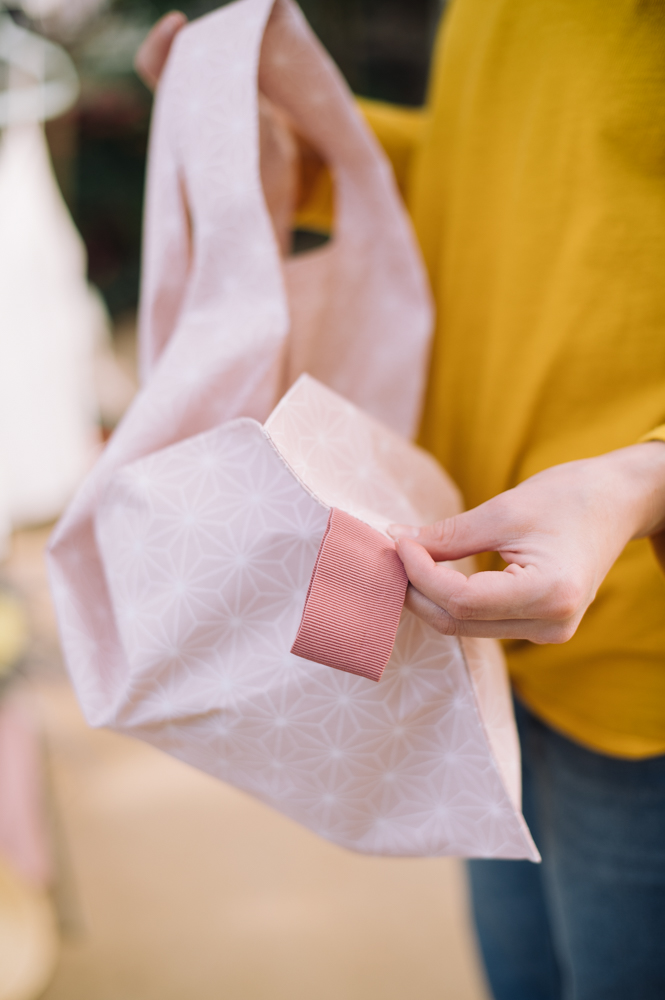
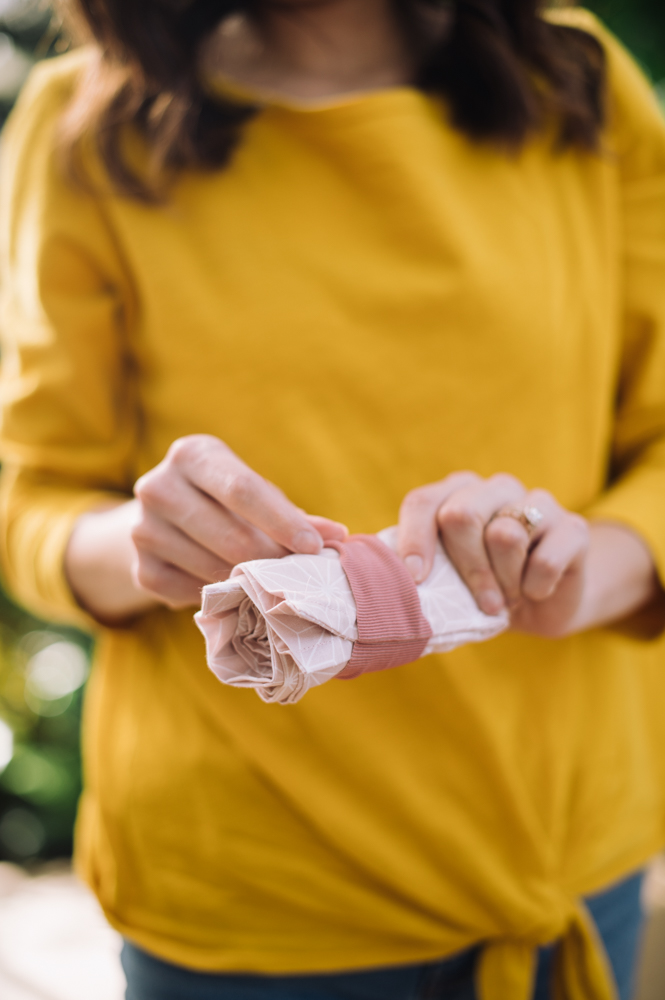
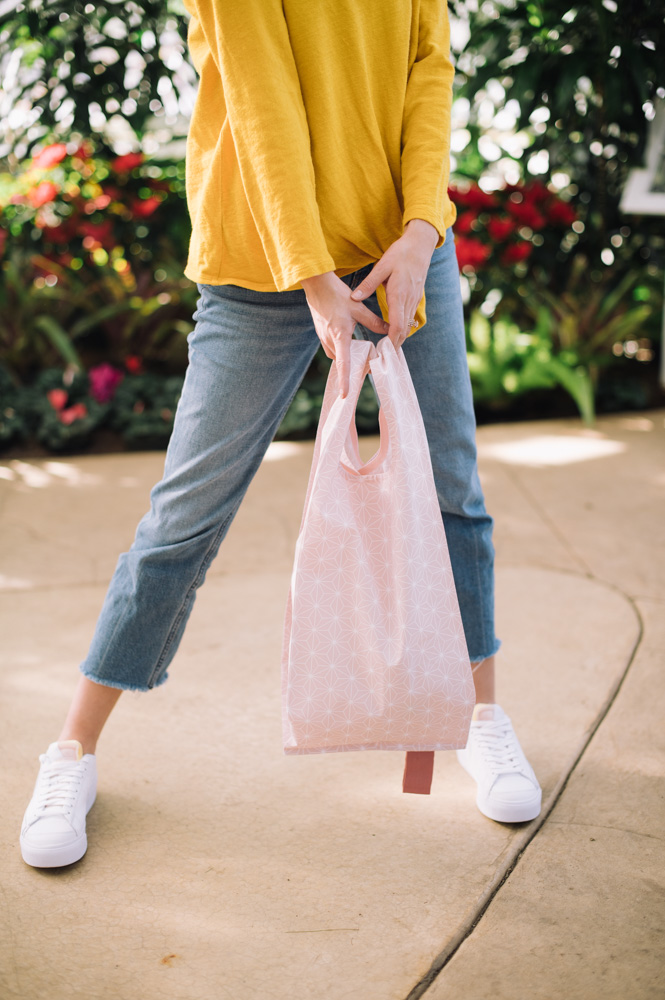
why can’t i download patterns
Hi Carmen! We’re sorry you’re having difficulties downloading our patterns. Here are a few troubleshooting ideas. Please make sure your browser allows you to open pop-ups from our site. Additionally, our patterns are PDFs and are compatible with Adobe Acrobat; you may need to download the free version of Adobe to open our patterns. Hope this helps! – Ashley, WeLikeSewing